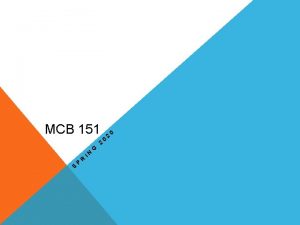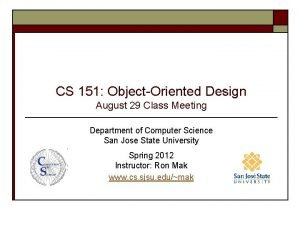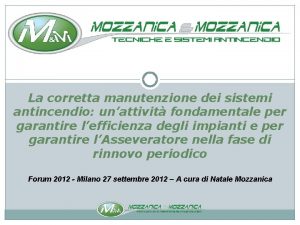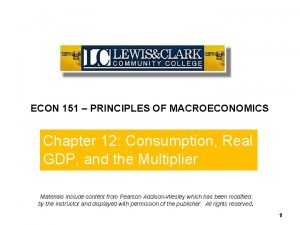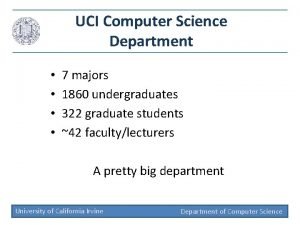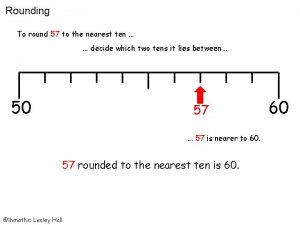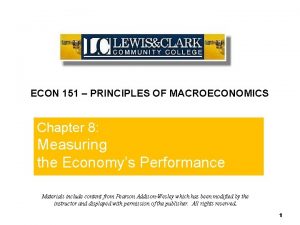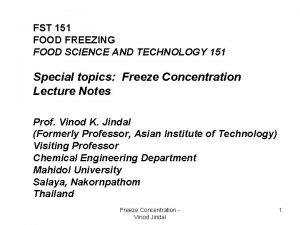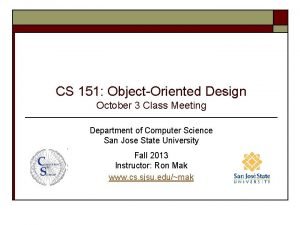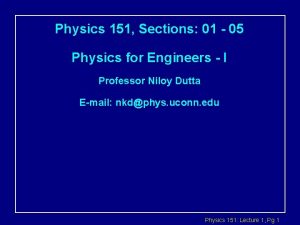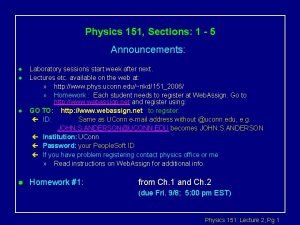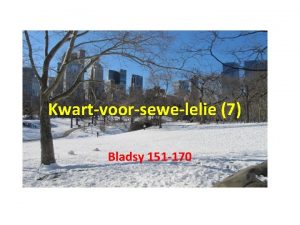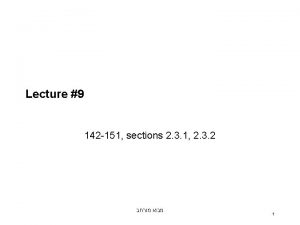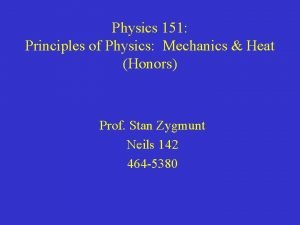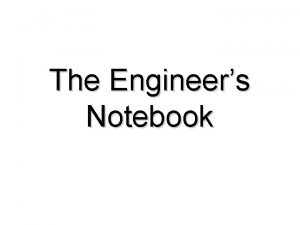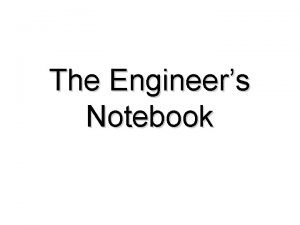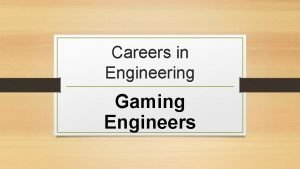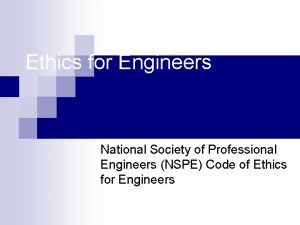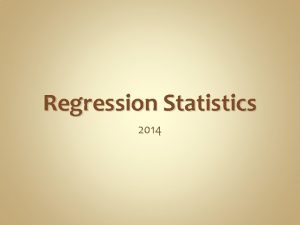Physics 151 Sections 01 05 Physics for Engineers
























- Slides: 24

Physics 151, Sections: 01 - 05 Physics for Engineers - I Professor Niloy Dutta E-mail: nkd@phys. uconn. edu Physics 151: Lecture 1, Pg 1

Lecture 1 Agenda for Today : l Course Introduction ç Scope of the course ç Structure of the course ç What you need to do and the final grade l Topic - Measurement and Units (Chapter 1) ç Fundamental units ç Systems of units ç Converting between systems of units ç Dimensional Analysis ç Significant digits Physics 151: Lecture 1, Pg 2

Course Info l Course has several components: çLecture: (discussions, demos and active learning (ACTs). çReading Assignments: from text, Serway&Jewett, Vol. 1. çHomework Sets: problems from the back of the book – We will use Web. Assign for doing HW (see next page). çReview Sessions: If needed çLabs: (group exploration of physical phenomena). Physics 151: Lecture 1, Pg 3

HOMEWORKS • Homework will be processed on the web using Web. Assign • Each student will register to get his/her account (~$ 25) • GO TO: http: //www. webassign. net to register: • ID: Same as UConn e-mail address without @uconn. edu, e. g. JOHN. S. ANDERSON@UCONN. EDU becomes JOHN. S. ANDERSON • Institution: UConn • Password: your People. Soft ID If you have problem registering contact physics office or me • HW will be due Friday before the weekend • No Late HW accepted HELP: Become familiar with the Physics Resource Center for help with problem sets. Room P 207 -C. Physics 151: Lecture 1, Pg 4

Announcements l Most of the info about the class will be posted on: çhttp: //www. phys. uconn. edu/~nkd/151_2006/ lecture notes (. pdf formats) » homework assignments and solutions » example exams » syllabus • Labs start week of Sept. 11 • Lab classes are held in P 204. • The lab manuals are on sale at the UConn Coop Cost - $ 12. Physics 151: Lecture 1, Pg 5

Exams 2 Midterms (in-class) and a Final Exam. » » Questions on tests will look like those we do in the class and in homeworks No surprises Final Grade l l Homework Lab Grade 2 Midterms Final Exam –> –> 15% 20% 35% Physics 151: Lecture 1, Pg 6

Scope of Physics 151 l Classical Mechanics: çMechanics: How and why things work. motion, balance, energy, vibrations çClassical: » Not too fast (v << c) » Not too small (d >> atom) l Thermodynamics (Intro) l Most everyday situations can be described in these terms. çPath of baseball çOrbit of planets çVibrations of a piano wire Physics 151: Lecture 1, Pg 7

See text 1. 1 Standard Quantities l l l The elements of substances and motion. All things in classical mechanics can be expressed in terms of the fundamental quantities: çLength L çMass M çTime T Some examples of more complicated quantities: ç Speed has the quantity of L / T (i. e. miles per hour). ç Acceleration has the quantity of L/T 2. ç Force has the quantity of ML / T 2 (as you will learn). Physics 151: Lecture 1, Pg 8

Units l SI (Système International) Units: çmks: L = meters (m), M = kilograms (kg), T = seconds (s) l British Units: çL = inches, feet, miles, M = slugs (pounds), T = seconds l We will use mostly SI units, but you may run across some problems using British units. You should know how to convert back & forth. Physics 151: Lecture 1, Pg 9

Length: Distance Radius of Visible Universe To Andromeda Galaxy To nearest star Earth to Sun Sears Tower Football Field Tall person Thickness of paper Wavelength of blue light Diameter of hydrogen atom Diameter of proton Length (m) 1 x 1026 2 x 1022 4 x 1016 1. 5 x 1011 4. 5 x 102 1. 0 x 102 2 x 100 1 x 10 -4 4 x 10 -7 1 x 10 -10 1 x 10 -15 Physics 151: Lecture 1, Pg 10

Order of Magnitude Calculations / Estimates l EXAMPLE: çWhat is the radius of the Earth ? Physics 151: Lecture 1, Pg 11

Time: Interval Time (s) Age of Universe Age of Grand Canyon Avg age of college student One year One hour Light travel from Earth to Moon One cycle of guitar A string One cycle of FM radio wave One cycle of visible light Time for light to cross a proton 5 x 1017 3 x 1014 6. 3 x 108 3. 2 x 107 3. 6 x 103 1. 3 x 100 2 x 10 -3 6 x 10 -8 1 x 10 -15 1 x 10 -24 Physics 151: Lecture 1, Pg 12

Mass: Object visible universe Milky Way galaxy Sun Earth Boeing 747 Car Student Dust particle Bacterium Proton Electron Mass (kg) ~ 1052 7 x 1041 2 x 1030 6 x 1024 4 x 105 1 x 103 7 x 101 1 x 10 -9 1 x 10 -15 2 x 10 -27 9 x 10 -31 Physics 151: Lecture 1, Pg 13

Some Prefixes for Power of Ten Power Prefix Abbreviation 10 -18 10 -15 10 -12 10 -9 10 -6 10 -3 atto femto pico nano micro milli a f p n m m 103 106 109 1012 1015 1018 kilo mega giga tera peta exa k M G T P E Physics 151: Lecture 1, Pg 14

See text : 1 -3 Density l Every substance has a density, designated = M/V • Dimensions of density are, • Some examples, Substance Gold Lead Aluminum Water units (kg/m 3) (103 kg/m 3) 19. 3 11. 3 2. 70 1. 00 Physics 151: Lecture 1, Pg 15

See text : 1 -3 Atomic Density l In dealing with macroscopic numbers of atoms (and similar small particles) we often use a convenient quantity called Avogadro’s Number, NA = 6. 02 x 1023. l Molar Mass and Atomic Mass are nearly equal ç 1. Molar Mass = mass in grams of one mole of the substance. ç 2. Atomic Mass = mass in u (a. m. u. ) of one atom of a substance, is approximately the number of protons and neutrons in one atom of that substance. Molar Mass and Atomic Mass are other units for density. • What is the mass of a single carbon atom ? = 2 x 10 -23 g/atom Physics 151: Lecture 1, Pg 16

See text : 1 -4 Dimensional Analysis l This is a very important tool to check your work çIt’s also very easy! l Example: Doing a problem you get the answer distance d = v t 2 ( velocity x time 2 ) Quantity on left side = L Quantity on right side = L / T x T 2 = L x T l Left units and right units don’t match, so answer must be wrong !! Physics 151: Lecture 1, Pg 17

Lecture 1, ACT 1 Dimensional Analysis l The force (F) to keep an object moving in a circle can be described in terms of the velocity (v, dimension L/T) of the object, its mass (m, dimension M), and the radius of the circle (R, dimension L). çWhich of the following formulas for F could be correct ? (a) F = mv. R (b) (c) Remember: Force has dimensions of ML/T 2 Physics 151: Lecture 1, Pg 18

Lecture 1, ACT 2 l The equation for the change of position of a train starting at x = 0 m is given by x = at 2/2 + bt 3. The dimension of the constant b must be : A) B) C) D) E) T-3 L T-2 L T-1 L-1 T-1 Physics 151: Lecture 1, Pg 19

Text : 1 -5 Converting between different systems of units l Useful Conversion factors: ç 1 inch = 2. 54 cm ç 1 m = 3. 28 ft ç 1 mile = 5280 ft ç 1 mile = 1. 61 km l Example: çHow many meters per second do you travel when a speedometer in your car indicates 60 mi/hr ? Physics 151: Lecture 1, Pg 20

Lecture 1, ACT 3 Converting between different systems of units l When on travel in Europe you rent a small car which consumes 6 liters of gasoline per 100 km. Does the car have a good gas-mileage ? (What is the MPG of the car ? ) l Useful Conversion factors: ç 1 gallon = 4 liters ç 1 mile = 1. 61 km Physics 151: Lecture 1, Pg 21

See text : 1 -7 Significant Figures l l l The number of digits that matter in a measurement or calculation. When writing a number, all non-zero digits are significant. Zeros may or may not be significant. çthose used to position the decimal point are not significant. çthose used to position powers of ten ordinals may or may not be significant. in scientific notation all digits are significant Examples: ç 2 ç 40 ç 4. 0 x 101 ç 0. 0031 ç 3. 03 1 sig fig ambiguous, could be 1 or 2 sig figs 3 sig figs Physics 151: Lecture 1, Pg 22

See text : 1 -7 Significant Figures l l l When multiplying or dividing, the answer should have the same number of significant figures as the least accurate of the quantities in the calculation. When adding or subtracting, the number of digits to the right of the decimal point should equal that of the term in the sum or difference that has the smallest number of digits to the right of the decimal point. Examples: ç 2 x 3. 1 = 6 ç 3. 1 + 0. 004 = 3. 1 ç 4. 0 x 101 2. 04 x 102 = 1. 6 X 10 -1 Physics 151: Lecture 1, Pg 23

Recap of today’s lecture l Measurement and Units (Chapter 1) çSystems of units çDensity çDimensional Analysis çConverting between systems of units çEstimates and Order of magnitude calc. çSignificant figures l (Text: (Text: (Text; 1. 1) 1. 3) 1. 4) 1. 5) 1. 6) 1. 7) Reading for next class : » Chapter 2: pages 23 -46 Physics 151: Lecture 1, Pg 24
 Main event management
Main event management Mcb 151 uiuc
Mcb 151 uiuc 118/151
118/151 Cs 151 sjsu
Cs 151 sjsu Dean deluzio
Dean deluzio Hino 151
Hino 151 Mozzanica antincendio
Mozzanica antincendio Determinants of consumption
Determinants of consumption Cs 121 uci
Cs 121 uci Round 57
Round 57 1,151,725 bytes
1,151,725 bytes Econ 151
Econ 151 Econ 151
Econ 151 Tổng kết vốn từ 151
Tổng kết vốn từ 151 Chm 151 final exam
Chm 151 final exam Freeze concentration
Freeze concentration Software consists of...
Software consists of... Sjsu cs 151
Sjsu cs 151 Item 151
Item 151 Tack för att ni lyssnade bild
Tack för att ni lyssnade bild Tack för att ni har lyssnat
Tack för att ni har lyssnat Tobinskatten för och nackdelar
Tobinskatten för och nackdelar Referatmarkering
Referatmarkering Verifikationsplan
Verifikationsplan Brunn karttecken
Brunn karttecken

